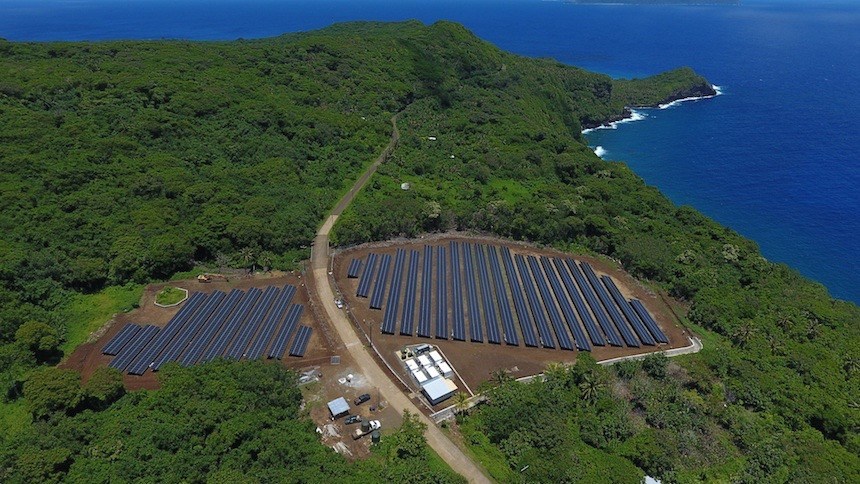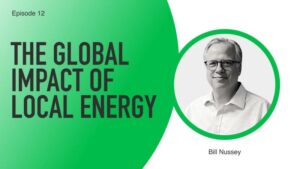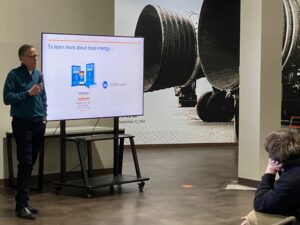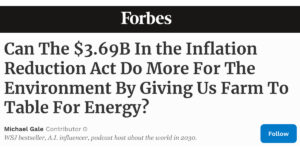
A friend recently asked, “You are a successful marketing tech CEO – why in the world are you getting into clean energy?”
My answer was simple. Never before in history has a multi-trillion dollar market been urgently searching for a product that already exists. The planet desperately needs cleaner energy but progress is far too slow. Fortunately, there is a way we can dramatically speed things up and lower the price of energy all at the same time.
Clean energy is the largest business opportunity of our generation. And local energy is the key that will unlock it.
Let me explain…
Clean energy is a better product
Compared to power from giant, centralized, fossil fuel plants, clean energy is simply a better product.
The Innovators Dilemma by Clayton Christensen describes disruptive, industry-changing products as, “simpler, cheaper, and more reliable and convenient.”
- Clean energy is cheaper – in 2016, electricity from the sun and the wind became cheaper than electricity from coal, natural gas and nuclear (in most cases, in most regions).
- Clean energy is simpler and more reliable – solar and wind farms have few moving parts, require almost no maintenance and are not subject to the volatility of fossil fuel prices.
- Clean energy is healthier – solar and wind farms produce no waste or pollution. Ask yourself: would you rather live next door to a coal plant, a nuclear plant or a solar farm?
The market opportunity for clean energy is enormous
The $2 trillion a year electric power business is one of the largest industries in the world. The only question is how many decades will it take to shift from fossil fuels to clean, renewable power from the sun and wind. Even at its current pace, the investments in new infrastructure will exceed almost anything else in history.
The entire venture capital industry has invested about $1 trillion over the last 25 years. Industry experts predict that more than $8 trillion will be invested in clean energy in the next 25 years.
There are still billions of people with little or no access to electricity
There are more than a billion rural, low-income people across the world that have no electricity at all. Another billion only have sporadic access. Most of these people have no refrigeration for food and medicine. They have no pumps for wells and irrigation. They rely on expensive and dangerous kerosene for lighting (studies suggest kerosene fumes and fires cause hundreds of thousands of deaths per year). They often walk for hours and pay exorbitant fees just to charge their cell phones. For years, these people had little choice but to wait years, sometimes a decade, for access to a grid they could barely afford.
In the same way mobile phones leapfrogged old-style telephone lines, solar home systems and microgrids are rewriting the rules of electrification. Low-cost systems that provide lights, radios, and even television, can be purchased for a tiny fraction of a grid connection. These “local energy” systems are moving beyond stop-gaps and are now becoming the best, long-term solutions to help rural families transform their lives. And, along the way, solar home systems and microgrids will create hundreds of thousands of local jobs and tens of billions of dollars in opportunities for entrepreneurs and investors.
In rural communities across the world, solar home systems and microgrids will create hundreds of thousands of local jobs and tens of billions of dollars in opportunities for entrepreneurs and investors.
Local energy is like transistors in the age of vacuum tubes
Whether it’s the need for resilience, security or lower cost, the demand for microgrids, community solar, residential solar, and battery-based solutions is growing rapidly in the Western world. Across the low-income world, demand is growing even faster.
I asked my friend to imagine what it would be like to be able to sell transistors in the era of vacuum tubes, to sell mobile phones in a world of land lines, or to sell laptops in the age of mainframes. Clean, local energy is just like this – a technically superior, less expensive and more desirable product whose biggest hurdle is entrenched mindsets and old habits
Big challenges mean big opportunities
To be fair, there are still problems to be solved. Solar only provides power during the day. Wind turbines only work when the wind blows. Most of the electrical power industry is highly regulated and protected by government granted monopolies. I firmly believe we can move past these challenges but it won’t be easy. But big challenges means big rewards and, frankly a lot of fun… Not only can we save the planet and improve a billion lives, but we have the opportunity to create a new generation of businesses that will challenge even the internet in their size and impact.
GET MONTHLY NEWS & ANALYSIS
Unsubscribe anytime. We will never sell your email or spam you.




One Response
Sir , You have mentioned the pollutants solid , liquid, and gases from a power generating plant , which are damaging our environment, but have neglected the primary waste heat/energy and it is also damaging our environment by global warming and the present corona virus is a manifestation of this global warming and climate change.
Thanks and regards Radhashyam Muduli Engineer Scientist Bhubaneswar Orissa India.
24/08/2020